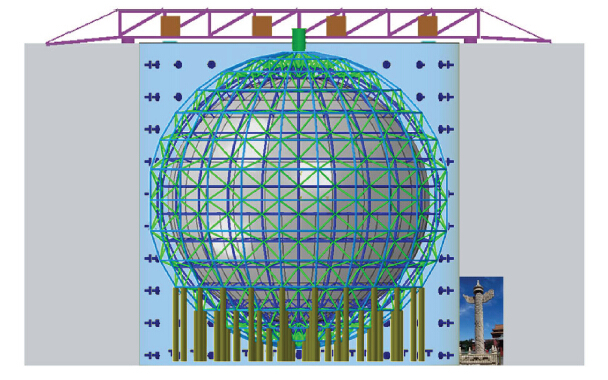I have talked a lot in my blog posts about various nuclear particles related to artificial and natural processes of nuclear fission and nuclear fusion. There are many other atomic and subatomic particles being explored by modern physics. One of the strangest particles is called the neutrino. These particles are produced in the fusion of our sun and hydrogen bombs, the natural decay of radioactive elements and by the fission and fusion processes in nuclear reactors. The reason that I have not discussed them is because they have zero electrical charge, virtually no mass and they have almost no interaction with ordinary matter.
There are trillions of neutrinos passing through the Earth or being generated from radioactive elements in the crust every second. Last week, researchers released a map of what they project the surface of the Earth would look like if we could see those neutrinos. There would be spots marking natural deposits of uranium and thorium as well as the locations of operating nuclear reactors and concentrations of nuclear waste.
The first official scientific detection of neutrinos was recorded at the Savannah River nuclear power plant in Georgia in 1959. Since then, there has been steady improvement in our ability to detect neutrinos. Most of the detectors are used in basic research into the nature of neutrinos but there has been some work on possible practical applications for monitoring nuclear activities.
The researchers who developed the map mentioned above used one detector in Japan and one detector in Italy. They also used geological information about the composition and density of the crust of the Earth as well as the location of the world's nuclear reactors. (The reactors emit the antimatter counterpart of neutrinos which are known as antineutrinos.) The detectors use huge tanks of mineral oil. Almost all of the trillions of neutrinos and antineutrinos pass through the tanks with absolutely no effect but every now and then one of them will hit a hydrogen nuclear just right and annihilate it, leaving behind a positron, a neutron and a spray of short lived particles. This triggers a signal in the detector.
When it comes to monitoring nuclear reactors, it is not so much a matter of knowing where they are. We have other ways such as infrared emissions that will tell us that. What neutrino and antineutrino detectors can do is tell us more about exactly what the reactors are being used for. Detectors can be made small as a refrigerator if the source is small. Such a detector could be placed next to a reactor that is being monitored. Different elements give off characteristic neutrino signatures. It would be possible to know if someone was diverting plutonium from a reactor.
It is also possible that a gigantic detector could be used to monitor global nuclear activities. China is developing a really big detector known as JUNO to study fundamental questions about the origin of the universe and the imbalance between matter and antimatter. Perhaps global nuclear monitoring could be tested with the Chinese detector which should be operating by 2020.
Diagram of Chinese JUNO neutrino detector:
